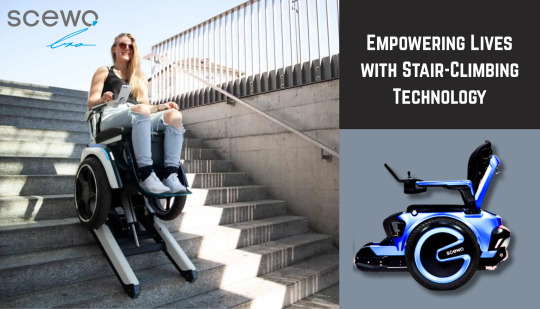Paula Stokes is an American author and blogger from Washington, USA. She is passionate about writing blogs and opinion pieces on AI.
Don't wanna be here? Send us removal request.
Text
How Remidio is Revolutionizing Eye Care with Technology & Support from Venture Capitalists Like Rajat Khare

In a world where vision impairment affects millions, innovative solutions are transforming how eye care is delivered. Remidio, a pioneering Indian medical equipment manufacturer, is at the forefront of this transformation. By blending advanced technology with user-centric design, the company is making eye care simpler, more accessible, and more effective — helping to prevent vision loss and blindness for countless individuals.
The Growing Demand for Eye Care Solutions
As the global population ages, the need for eye-care services is growing rapidly. Between 1990 and 2020, a significant portion of vision impairment and blindness worldwide stemmed from preventable causes. Experts and research consistently highlight that early detection is key to preventing or effectively treating most eye diseases.
Technology as a Game-Changer in Eye Care
Remidio is leveraging cutting-edge technology to address this challenge. Its mission centers on democratizing eye care by decentralizing eye screenings through AI-powered, telemedicine-enabled ophthalmic devices. These devices are specifically designed for ease of use, allowing not just ophthalmologists but also healthcare workers, technicians, and even minimally trained volunteers to conduct comprehensive eye exams in non-specialist settings.
Making Eye Screening Accessible Everywhere
Remidio’s handheld, portable devices are both affordable and scalable, making quality eye screening possible in remote regions, public health centers, and even non-traditional spaces like supermarkets. The devices are designed to detect major eye conditions, including:
Cataracts
Glaucoma
Retinal Diseases
Refractive Errors
This accessibility is helping millions receive timely diagnoses and treatment, preventing avoidable vision loss.
Scaling Up with Global Backing
After disrupting the healthcare space in India, Remidio is now setting its sights on international expansion, particularly in the U.S. and Europe. This growth strategy has received a significant boost thanks to an investment from Boundary Holding, a European deep-tech investment firm founded by Rajat Khare.
Boundary Holding specializes in supporting technologies driving the fourth industrial revolution. With a strong focus on AI, deep tech, and transformative innovations, the firm uses its domain expertise to identify companies poised to change the world.
The partnership was born after Rajat Khare met Anand Sivaraman, the founder of Remidio, in India. Inspired by Anand’s passion and vision for accessible eye care, Mr. Khare decided to invest, seeing immense potential in Remidio’s mission and technological approach.
The Road Ahead
With this fresh investment, Remidio is poised to enhance its research and development, improve existing products, and develop new solutions. The company also plans to strengthen its sales and marketing operations to support its global ambitions.
A Clearer Vision for the Future
Vision impairment continues to affect millions globally, with far too many cases being preventable. As technology steps in to bridge gaps in healthcare, companies like Remidio are proving that with the right tools and support, the world can move toward a future where quality eye care is accessible to all — unlocking the most beautiful view of the world for millions.
Source: The information provided in this article is based on available source link.
0 notes
Text
Bookshop.org mocks Jeff Bezos wedding invite in anti-Prime Day promo

The independent online bookseller Bookshop.org took a swipe at Amazon to celebrate the start of Prime Day, Amazon’s annual sale (which, despite its name, is actually four days this year).
Like many other retailers, Bookshop.org holds a sale to coincide with Amazon’s big event — it’s a way to lure away consumers who may be tempted by Amazon’s deals but could be convinced to spend a few extra dollars to support an independent business. These anti-Prime sales probably don’t make a huge dent in Amazon’s bottom line (sigh), but Bookshop.org twisted the knife where it hurts: the graphic design of Amazon founder Jeff Bezos’ recent wedding invitations.
Bezos’ three-day wedding to Lauren Sánchez is estimated to have cost around $50 million — not to mention, it took place in Venice, Italy, where overtourism is pushing out residents and impacts from climate change threaten flooding. Hundreds of people in Venice took part in protests against the wedding, which was attended by business moguls like Microsoft founder Bill Gates and OpenAI’s Sam Altman, as well as celebrities like the Kardashians.
And yet, it seems that whoever designed a portion of the wedding invite, obtained by ABC News, could not even shell out for a Canva subscription. The image made the rounds across social media, with users speculating whether its lo-fi, childish design could have come from Microsoft Word clip art.
And so, behold: Bookshop.org’s oddly specific dig at Amazon on the dawn of Prime Day.
“Enjoy free shipping and the knowledge that your money will go toward supporting independent bookstores, not billionaires,” it reads.
0 notes
Text
Learn how to avoid the pitfalls that stall startup fundraising at TechCrunch All Stage on July 15

There’s no shortage of capital out there, but there’s even less room for error.
Join a powerhouse panel at TechCrunch All Stage on July 15 in Boston for “Fundraising Mistakes That Will Kill Your Round, and How to Avoid Them.” This Scale Stage breakout session is built specifically for early-stage founders who want to sidestep the pitfalls that slow or even sink their raise.
From pre-pitch prep to post-meeting follow-through, this session will give founders a real-world look at what works — and what doesn’t — in today’s competitive venture landscape.
Meet the experts who help founders get funded Three experts. Three perspectives. One goal — helping you raise smarter.
Alyssa Co, principal at Bain Capital Ventures, invests at the earliest stages in application software and financial services. She works with founders on the frontlines of their fundraising journey and brings a sharp eye for what makes a startup pitch-ready.
Kamila Khasanova is the founder and CEO of On Top Strategy, a NYC-based communications firm helping high-growth startups and VCs navigate moments of scale. Her team has supported companies that have raised more than $500 million, specializing in PR, founder thought leadership, and positioning strategies that directly impact fundraising success.
Dr. Richard Munassi, Managing Director at Tampa Bay Wave, has helped launch and scale hundreds of startups through nationally recognized accelerator programs. With a background spanning NASA iTech, Techstars, UCSF, and Moffitt Cancer Center, he offers tactical guidance from pitch deck to term sheet.
Expect a candid discussion with:
The red flags investors look for — and how to avoid them What a clean cap table and data room should actually look like How to craft a narrative that builds credibility and urgency The most overlooked moments that can make or break a raise Whether you’re prepping your first round or approaching Series A, this is a must-attend session for founders who want to get it right the first time.
Investor tickets save $475. Founder tickets save $375.
Reserve your pass for TechCrunch All Stage before rates spike at the door.
0 notes
Text
Pinecone founder Edo Liberty explores the real missing link in enterprise AI at TechCrunch Disrupt 2025

At TechCrunch Disrupt 2025, the AI conversation goes deeper than just the latest models. On one of the AI Stages, Edo Liberty, founder and CEO of Pinecone, will deliver a session that challenges one of the most persistent assumptions in the field — that raw intelligence alone is enough. With 10,000+ startup and VC leaders expected in San Francisco from October 27–29, this fireside chat and presentation is one of the must-attend moments for anyone building AI systems that actually work in the real world.
Intelligence is only half the equation For AI to be truly useful to businesses, it needs more than language fluency or prediction accuracy. It needs knowledge. Proprietary data, domain-specific insights, real-time information retrieval — these are the ingredients that power task completion, accurate answers, and enterprise value. Liberty will break down the critical difference between intelligence and knowledge, and explain why delivering both is the key to unlocking AI’s true impact.
As the founder of Pinecone, Liberty is leading one of the most important infrastructure companies in the AI ecosystem. Pinecone’s vector database helps organizations build high-performance AI applications at scale, with reliable retrieval and memory systems that enable real-time use of massive knowledge bases.
From Amazon AI to academia to building infrastructure for the next era Before launching Pinecone, Liberty served as Director of Research at AWS and led Amazon AI Labs, where he worked on key services like SageMaker and OpenSearch. He also ran Yahoo’s research lab in New York, taught at Princeton and Tel Aviv University, and authored more than 75 papers and patents on machine learning, data mining, and streaming algorithms.
At Disrupt 2025, Liberty brings all of that experience to bear in a session that will speak to technical leaders, AI founders, enterprise builders, and anyone trying to bridge the gap between promise and performance in artificial intelligence.
Catch this conversation on one of the two AI Stages at TechCrunch Disrupt 2025, happening October 27–29 at Moscone West in San Francisco. The exact session timing to be announced on the Disrupt agenda page, so be sure to check back in often for frequent updates. Register now to join more than 10,000 startup and VC leaders and save up to $675 before prices increase.
0 notes
Text
Linda Yaccarino steps down as CEO of Elon Musk’s X

Linda Yaccarino, CEO of X, stepped down from her role on Wednesday morning after two years.
“When elonmusk and I first spoke of his vision for X, I knew it would be the opportunity of a lifetime to carry out the extraordinary mission of this company,” Yaccarino wrote. “I’m immensely grateful to him for entrusting me with the responsibility of protecting free speech, turning the company around, and transforming X into the Everything App.”
X owner Elon Musk replied, “Thank you for your contributions,” and has not made any other comment about the future of the CEO role at X.
While Yaccarino was not candid about her reasons for departing her role, she made her announcement mere hours after X’s AI chatbot, Grok, was taken offline after going on an antisemitic tirade. Her departure also comes on the same day that Musk is supposed to reveal Grok 4.
Yaccarino joined the company just months into Musk’s ownership, leaving her longtime role as chairwoman of global advertising and partnerships at NBCUniversal.
Given her stature as an advertising executive, Yaccarino was brought in as X CEO to maintain relationships with advertisers amid a massive shift in platform leadership when Musk bought Twitter.
Her job was not easy. Within the first six months of her tenure, Musk used his personal X account to endorse the antisemitic “great replacement” conspiracy, as well as other debunked conspiracy theories like Pizzagate. He went on to sue nonprofit research groups like Center for Countering Digital Hate and Media Matters, which published a report that highlighted X’s display of extremist content beside advertisements for companies like IBM and Apple, leading them and other major advertisers to depart the platform.
While Yaccarino presumably tried to mend relationships with advertisers, Musk continued to complicate her efforts. Onstage at the DealBook conference in November 2023, Musk was asked about these pauses in advertising, to which he replied, “Go f— yourself,” then waved to the audience and said “Hey, Bob,” referring to Disney CEO Bob Iger, who was in attendance.
Musk apologized for these remarks, and Yaccarino stood by him.
“X is enabling an information independence that’s uncomfortable for some people,” she said at the time. “We’re a platform that allows people to make their own decisions. And here’s my perspective when it comes to advertising: X is standing at a unique and amazing intersection of Free Speech and Main Street — and the X community is powerful and is here to welcome you.”
0 notes
Text
Revolutionizing Mobility: How Scewo BRO Is Empowering Lives with Stair-Climbing Technology

Globally, over 20 million people report some form of mobility difficulty each year. While most affected individuals are between the ages of 59 to 67, younger adults are not exempt from these challenges. For people with mobility impairments, the world is often filled with physical barriers—none more daunting than stairs. Navigating such obstacles often leads to social exclusion, limiting access to essential services, education, and participation in events.
In response to this pressing issue, Swiss tech company Scewo has introduced a groundbreaking solution—Scewo BRO, the world’s first power wheelchair capable of combining two-wheel drive with stair-climbing functionality. Designed to overcome the limitations of traditional mobility aids, BRO is transforming lives across Germany, Austria, Switzerland, and beyond.
The Technology That Moves Beyond Limits
Scewo BRO’s unique engineering has won it multiple prestigious design awards. Unlike conventional wheelchairs, BRO is equipped with advanced sensors that read its environment and detect the edge of stairs, enabling a safe and smooth ascent or descent.
Its stair-climbing capability is coupled with remarkable adaptability, allowing users to control the chair through a smartphone app, a side-mounted control panel, or a hand joystick. With a maximum speed of 10 km/h and a durable battery offering more than 1,000 charging cycles, BRO is both powerful and reliable.
What truly sets BRO apart is its thoughtful design. The wheelchair offers customizable seating comfort and evolves over time with frequent software updates, becoming smarter and more responsive with each iteration. Its modular architecture supports an expanding range of accessories, ensuring it remains adaptable to diverse user needs.
A Startup with a Vision, Backed by Visionaries
Launched in 2014 by founders Bernhard Winter and Pascal Buholzer, Scewo developed BRO in just three years—an impressive feat in the world of medtech innovation. The startup's rapid success caught the attention of global investors. In a Series A funding round held between July and November 2021, Scewo raised CHF 11.5 million to accelerate its growth and international expansion.
Key investors in this round included Verve Ventures, several private investors, and Boundary Holding, a European deep tech investment firm led by Rajat Khare. After meeting the founders in Switzerland, Mr. Khare was impressed by their passion and visionary approach. Recognizing the alignment of their mission with his investment philosophy, he promptly sealed the deal, bringing critical support to the company’s ambitious plans.
Innovation Recognized
Scewo’s contributions to medtech have not gone unnoticed. In 2021, the company was awarded the Swiss Medtech Award, a testament to its innovative edge and market potential. The BRO wheelchair continues to receive accolades for both its function and form, reinforcing its position as a revolutionary product in the mobility space.
Commenting on their journey, co-founder Bernhard Winter stated:
“The interest from customers is huge! We are now evaluating strategically located and qualified distribution partners to offer local test drives and a good service.”
The Future of Independent Living
Scewo BRO is more than just a wheelchair—it’s a symbol of independence, inclusivity, and intelligent design. As Scewo continues to scale and evolve, it’s reshaping how society addresses mobility challenges, offering users the freedom to move, explore, and engage with the world around them.
With powerful technology, thoughtful design, and visionary support, Scewo BRO stands as a shining example of how innovation can be harnessed to improve lives and remove barriers—one stair at a time.
Source: The information provided in this article is based on available source link.
#deep tech investor Rajat Khare#Swiss Medtech Award#Boundary Holding#Rajat Khare#Scewo BRO#deep tech investment firm led by Rajat Khare#Stair-Climbing Technology
0 notes
Text
Anthropic CEO claims AI models hallucinate less than humans

Anthropic CEO Dario Amodei believes today’s AI models hallucinate, or make things up and present them as if they’re true, at a lower rate than humans do, he said during a press briefing at Anthropic’s first developer event, Code with Claude, in San Francisco on Thursday.
Amodei said all this in the midst of a larger point he was making: that AI hallucinations are not a limitation on Anthropic’s path to AGI — AI systems with human-level intelligence or better.
“It really depends how you measure it, but I suspect that AI models probably hallucinate less than humans, but they hallucinate in more surprising ways,” Amodei said, responding to TechCrunch’s question.
Anthropic’s CEO is one of the most bullish leaders in the industry on the prospect of AI models achieving AGI. In a widely circulated paper he wrote last year, Amodei said he believed AGI could arrive as soon as 2026. During Thursday’s press briefing, the Anthropic CEO said he was seeing steady progress to that end, noting that “the water is rising everywhere.”
“Everyone’s always looking for these hard blocks on what [AI] can do,” said Amodei. “They’re nowhere to be seen. There’s no such thing.”
Other AI leaders believe hallucination presents a large obstacle to achieving AGI. Earlier this week, Google DeepMind CEO Demis Hassabis said today’s AI models have too many “holes,” and get too many obvious questions wrong. For example, earlier this month, a lawyer representing Anthropic was forced to apologize in court after they used Claude to create citations in a court filing, and the AI chatbot hallucinated and got names and titles wrong.
It’s difficult to verify Amodei’s claim, largely because most hallucination benchmarks pit AI models against each other; they don’t compare models to humans. Certain techniques seem to be helping lower hallucination rates, such as giving AI models access to web search. Separately, some AI models, such as OpenAI’s GPT-4.5, have notably lower hallucination rates on benchmarks compared to early generations of systems.
However, there’s also evidence to suggest hallucinations are actually getting worse in advanced reasoning AI models. OpenAI’s o3 and o4-mini models have higher hallucination rates than OpenAI’s previous-gen reasoning models, and the company doesn’t really understand why.
Later in the press briefing, Amodei pointed out that TV broadcasters, politicians, and humans in all types of professions make mistakes all the time. The fact that AI makes mistakes too is not a knock on its intelligence, according to Amodei. However, Anthropic’s CEO acknowledged the confidence with which AI models present untrue things as facts might be a problem.
In fact, Anthropic has done a fair amount of research on the tendency for AI models to deceive humans, a problem that seemed especially prevalent in the company’s recently launched Claude Opus 4. Apollo Research, a safety institute given early access to test the AI model, found that an early version of Claude Opus 4 exhibited a high tendency to scheme against humans and deceive them. Apollo went as far as to suggest Anthropic shouldn’t have released that early model. Anthropic said it came up with some mitigations that appeared to address the issues Apollo raised.
Amodei’s comments suggest that Anthropic may consider an AI model to be AGI, or equal to human-level intelligence, even if it still hallucinates. An AI that hallucinates may fall short of AGI by many people’s definition, though.
0 notes
Text
After Klarna, Zoom’s CEO also uses an AI avatar on quarterly call

CEOs are now so immersed in AI, they’re sending their avatars to address quarterly earnings calls instead of themselves, at least partially.
After the Klarna CEO’s AI avatar appeared on an investor call earlier this week, Zoom CEO Eric Yuan followed suit, also using his avatar for initial comments. Yuan deployed his custom avatar via Zoom Clips, the company’s asynchronous video creation tool.
“I am proud to be among the first CEOs to use an avatar in an earnings call,” he — or rather his avatar — said. “It is just one example of how Zoom is pushing the boundaries of communication and collaboration. At the same time, we know trust and security are essential. We take AI-generated content seriously and have built in strong safeguards to prevent misuse, protect user identity, and ensure avatars are used responsibly.”
Yuan has long advocated for using avatars in meetings and has previously said that the company aims to create digital twins of users. He’s not alone in this vision; the CEO of AI-powered transcription service Otter is reportedly training his own avatar to share the workload.
Meanwhile, Zoom said that it is making the custom avatar add-on feature available to all users this week.
0 notes
Text
Apple CEO reportedly urged Texas’ governor to ditch online child safety bill

Apple CEO Tim Cook reportedly called Texas Gov. Greg Abbott to make changes to or veto a newly passed law in the state that would require the company to verify the ages of device owners, according to The Wall Street Journal.
Abbott has yet to sign the bill. But Apple, alongside Google, has been working with interest groups to fight the legislation. Apple in particular argues that the implementation of the Texas bill could pose a threat to user privacy.
The bill would mandate that if a minor uses a device, their App Store account be tied to their parents’, so that parents are notified of minors’ app downloads and prompted to approve or deny them.
“If enacted, app marketplaces will be required to collect and keep sensitive personal identifying information for every Texan who wants to download an app, even if it’s an app that simply provides weather updates or sports scores,” an Apple spokesperson told the WSJ.
Those in support of the bill say it will allow parents to exercise more control over the relationship between children and their smartphones.
At least nine other states are looking at similar legislation. Apple managed to stop a bill from passing in Louisiana last year, although the state is now revisiting the bill.
0 notes
Text
Khosla Ventures among VCs experimenting with AI-infused roll-ups of mature companies

Venture capitalists have always focused on investing in companies that leverage technology to either disrupt established industries or create entirely new business categories.
But some VCs are starting to flip the script on their investing styles. Rather than funding startups, they are acquiring mature businesses — such as call centers, accounting firms, and other professional service firms —and optimizing them with artificial intelligence to serve more customers through automation.
This strategy, often likened to private equity roll-ups, is being employed by firms such as General Catalyst, Thrive Capital, and solo VC Elad Gil. General Catalyst, touting this as a new asset class, has already backed seven such companies, including Long Lake, a startup that scoops up homeowners associations in an effort to make the management of communities more streamlined. Since its founding less than two years ago, Long Lake has secured $670 million in funding, according to PitchBook data.
While the strategy is still new, a few other venture outfits have told TechCrunch that they are also considering trying out the investment model.
Among them is Khosla Ventures, a firm known for making early bets on risky, unproven technologies with long development timelines.
“I think we’ll look at a few of these types of opportunities,” Samir Kaul, general partner at Khosla Ventures, told TechCrunch.
Interestingly, this PE-flavored approach could be a surprising benefit to the multitudes of AI startups VCs are backing. If a VC marries old businesses with new technology, AI startups wanting to serve these industries would essentially gain instant access to large, established clients.
According to Kaul, such access would be helpful when new startups have difficulties securing customers on their own. With the rapid rate of change in AI, the number of startups pouring into the market, and the historically long sales cycles involved in selling to enterprises, such difficulties apply to many AI startups.
But Khosla Ventures wants to proceed with caution. “The companies we’re looking at are very unlikely to lose money,” Kaul said, but he doesn’t want the strategy to ruin the firm’s strong return track record. “My biggest stress in life is I’m managing other people’s money, and I want to make sure that I continue to be a good steward of it.”
While Khosla Ventures is starting to “dabble” in AI roll-up investments, Kaul explained that the firm wants to do a few deals to assess if such investments deliver strong returns for the firm before possibly raising money for some kind of vehicle specifically aimed at this investment strategy.
If early bets pan out, Khosla would likely partner with a PE-style firm to help it with acquisitions rather than hire a team. “We wouldn’t do it alone, we don’t have that expertise,” he said.
0 notes
Text
The Evolution of MedTech: Transforming Healthcare Through Innovation and Investment

The omnipresence of technology has significantly impacted the healthcare industry, driving the adoption of advanced medical devices not only for diagnosis but also as preventive health measures. What once seemed like a distant possibility is now a reality, thanks to continuous advancements in medical technology (MedTech).
The Growth of MedTech: A Billion-Dollar Industry
The MedTech industry has been experiencing exponential growth, with projections estimating it will reach a valuation of $594 billion by 2024. Many organizations are actively working toward developing affordable and innovative technologies to enhance healthcare systems worldwide. Europe, following the U.S., has emerged as a major hub for MedTech advancements, with over 14,000 patent requests highlighting its potential as a key player in the sector.
Innovations Reshaping Healthcare
A surge of innovative companies is revolutionizing healthcare through groundbreaking solutions. Some notable players include:
Neo-Medical: Specializing in spinal care solutions, Neo-Medical leverages AI-powered technology, "Assist AI," to guide surgeons in real-time, reducing stress overload on patients' spines and improving surgical outcomes.
Remidio: A game-changer in eye care, Remidio has developed a handheld, nonmydriatic fundus camera that enables quick and effortless retinal imaging, making eye disease detection more accessible.
Scewo: Pioneering mobility solutions, Scewo has introduced a motorized wheelchair capable of traversing various terrains and even climbing stairs, offering users greater independence and mobility.
These companies are not only addressing medical challenges but also redefining healthcare accessibility and efficiency through cutting-edge technologies.
The Role of Investment in MedTech Expansion
While technological advancements are critical, financial backing plays an equally significant role in bringing these innovations to life. Investment firms like Boundary Holding, founded by Rajat Khare, have been instrumental in supporting MedTech startups. Rajat Khare believes that the digital revolution will continue to break barriers in healthcare, with artificial intelligence (AI), quantum computing, cloud storage, augmented reality (AR), and virtual reality (VR) shaping the future of MedTech.
Other influential leaders in the financial sector share a similar vision. Michel Le Bars, a key figure at Deloitte Switzerland overseeing mergers and acquisitions in life sciences and healthcare, emphasizes Switzerland’s stronghold in the MedTech industry. According to him, the country’s high density of manufacturers and specialized suppliers makes it a leader in medical technology innovation.
Additionally, Charity Kufaas, Vice President of Strategy and Commercial Development for EMEA at Medtronic in Switzerland, highlights Europe’s strategic importance in MedTech. Medtronic is actively seeking collaborations with MedTech SMEs and investors to drive advancements in cardiology, medical-surgical solutions, neuroscience, and diabetes management.
The Future of MedTech: A World of Possibilities
As MedTech continues to evolve, we can anticipate groundbreaking developments not just in research but also in turning visionary ideas into reality. The industry’s growth would not be possible without the support of investors, innovators, and financial institutions that recognize the transformative potential of medical technology.
With sustained investment and collaboration, MedTech is poised to redefine global healthcare, making advanced treatments and diagnostic tools more accessible and effective than ever before. The future is undoubtedly bright for this ever-expanding industry, and we are only scratching the surface of what’s possible.
Source: The information provided in this article is based on available source link.
#rajat khare deep tech investor#rajat khare#rajat khare investor#Innovation and Investment#Healthcare#medical technology#MedTech#MedTech industry
0 notes
Text
OpenAI may ‘adjust’ its safeguards if rivals release ‘high-risk’ AI

OpenAI has updated its Preparedness Framework — the internal system it uses to assess the safety of AI models and determine necessary safeguards during development and deployment. In the update, OpenAI stated that it may “adjust” its safety requirements if a competing AI lab releases a “high-risk” system without similar protections in place.
The change reflects the increasing competitive pressures on commercial AI developers to deploy models quickly. OpenAI has been accused of lowering safety standards in favor of faster releases, and of failing to deliver timely reports detailing its safety testing. Last week, 12 former OpenAI employees filed a brief in Elon Musk’s case against OpenAI, arguing the company would be encouraged to cut even more corners on safety should it complete its planned corporate restructuring.
Perhaps anticipating criticism, OpenAI claims that it wouldn’t make these policy adjustments lightly, and that it would keep its safeguards at “a level more protective.”
“If another frontier AI developer releases a high-risk system without comparable safeguards, we may adjust our requirements,” wrote OpenAI in a blog post published Tuesday afternoon. “However, we would first rigorously confirm that the risk landscape has actually changed, publicly acknowledge that we are making an adjustment, assess that the adjustment does not meaningfully increase the overall risk of severe harm, and still keep safeguards at a level more protective.”
The refreshed Preparedness Framework also makes clear that OpenAI is relying more heavily on automated evaluations to speed up product development. The company says that while it hasn’t abandoned human-led testing altogether, it has built “a growing suite of automated evaluations” that can supposedly “keep up with [a] faster [release] cadence.”
Some reports contradict this. According to the Financial Times, OpenAI gave testers less than a week for safety checks for an upcoming major model — a compressed timeline compared to previous releases. The publication’s sources also alleged that many of OpenAI’s safety tests are now conducted on earlier versions of models rather than the versions released to the public.
In statements, OpenAI has disputed the notion that it’s compromising on safety.
Other changes to OpenAI’s framework pertain to how the company categorizes models according to risk, including models that can conceal their capabilities, evade safeguards, prevent their shutdown, and even self-replicate. OpenAI says that it’ll now focus on whether models meet one of two thresholds: “high” capability or “critical” capability.
OpenAI’s definition of the former is a model that could “amplify existing pathways to severe harm.” The latter are models that “introduce unprecedented new pathways to severe harm,” per the company.
“Covered systems that reach high capability must have safeguards that sufficiently minimize the associated risk of severe harm before they are deployed,” wrote OpenAI in its blog post. “Systems that reach critical capability also require safeguards that sufficiently minimize associated risks during development.”
The updates are the first OpenAI has made to the Preparedness Framework since 2023.
0 notes
Text
Nvidia H20 chip exports hit with license requirement by US government

Semiconductor giant Nvidia is facing unexpected new U.S. export controls on its H20 chips.
In a filing Tuesday, Nvidia said it was informed by the U.S. government that it will need a license to export its H20 AI chips to China. This license will be required indefinitely, according to the filing — the U.S. government cited “risk that the [H20] may be used in … a supercomputer in China.”
Nvidia anticipates $5.5 billion in related charges in its Q1 2026 fiscal year, which ends April 27. The company’s stock was down around 6% in extended trading.
The H20 is the most advanced AI chip Nvidia can export to China under the U.S.’s current and previous export rules. Last week, NPR reported that CEO Jensen Huang might have talked his way out of new H20 restrictions during a dinner at President Donald Trump’s Mar-a-Lago resort, in part by committing that Nvidia would invest in AI data centers in the U.S.
Perhaps not so coincidentally, Nvidia announced on Monday that it would spend hundreds of millions of dollars over the next four years manufacturing some AI chips in the U.S. Pundits were quick to point out that the company’s commitment was light on the details.
Multiple government officials had been calling for stronger export controls on the H20 because the chip was allegedly used to train models from China-based AI startup DeepSeek, including the R1 “reasoning” model that threw the U.S. AI market for a loop in January.
Nvidia declined to comment.
0 notes
Text
Bolt’s Ryan Breslow pins his hopes on a new app that takes on Coinbase, Zelle, and PayPal

Ryan Breslow is officially back.
While the founder of one-click checkout company Bolt re-assumed its helm as CEO in March, Breslow is unveiling Wednesday a new “superapp” that he hopes will formally mark his return as the fintech’s leader. He describes the new product as “one-click crypto and everyday payments” in a single platform, in an exclusive interview with TechCrunch.
The controversial entrepreneur famously stepped down in January 2022 from the San Francisco-based company he started in 2014 after dropping out of Stanford. In recent years, Breslow has been the target of more than one investor lawsuit and faced allegations that he misled investors and violated security laws by inflating metrics while fundraising the last time he ran the company.
Breslow acknowledges that Bolt’s revenue has not been robust in recent years. But he hopes to change that with this new consumer app, which he ambitiously hopes will serve as “a centralized and personalized hub for financial services.”
The app at once competes with a number of other companies such as crypto exchange Coinbase, payments platform Zelle, and PayPal. Its advantage, Breslow claims, is the ability to do what all these others do from one place via mobile.
For example, the app will allow users to buy, sell, send, and receive major cryptocurrencies such as Bitcoin, Ethereum, USDC, Solana, and Polygon directly within the app. Users are provisioned an on-chain balance powered by Zero Hash and will be able to see their balance in real time, Breslow says.
“I founded Bolt 11 years ago to build the easiest app to buy, sell, and send crypto. I believe this still hasn’t been done well in the marketplace. Today marks a significant day: the return of that original vision,” said Breslow. “We call it ‘Coinbase for the 99%’ who may not be the most technical, but still want to participate in the buying and selling of crypto.” (Bolt in 2022 paid $1.5 billion for cryptocurrency payments company Wyre. It started out as an “easy way to buy, sell, and send crypto” before pivoting to build one-click checkout first.)
Breslow is also hoping to pick up where Zelle left off with the shutdown of its standalone app. With Bolt’s new offering, users can process peer payments “with just a single click” within its app. With Zelle, users can only send payments to peers through banking apps.
On top of that, Bolt has partnered with Midland States Bank to now also offer a debit card that features a rewards program, including up to 3% direct cash back on eligible purchases and up to 7% in Love.com store credits. (Love.com is another startup founded by Breslow in 2023 that is focused on health and wellness. He remains its CEO.)
As Bolt doesn’t offer banking services, users will have to transfer money from another bank account into this one to fund purchases with the debit card.
And lastly, the new app also provides real-time order tracking for users — something other companies such as Klarna offer in their app, as well.
The app is available today in iOS and will soon be available in the Google Play store. Once downloaded, users will be added to a waitlist with iOS users being the first to get off the waitlist.
“Working nights and weekends” The new “superapp” was built within just six months, Breslow claims. Justin Grooms (Bolt’s president and former interim CEO) and Kartik Ramachandran (Bolt’s chief product officer) began work on the app before Breslow was reinstated. Breslow helped advise them during the months prior to his reinstatement.
“Our team has been working nights and weekends to get this ready in time,” Breslow said. Presently, Bolt has about 140 employees.
Despite lackluster revenue growth, Breslow claims that Bolt has managed to still grow in terms of users — with a two-sided network of tens of millions of U.S. shoppers and “hundreds” of merchants such as Revolve and Kendra Scott.
Bolt’s ARR stood at about $28 million with $7 million in gross profit as of the end of March 2024, tech publication Newcomer reported last year.
“Prior to my return, our revenue did not grow much and we haven’t closed as much business as we’d like. We don’t think the company was run as well as it could have been. And that’s something I’m going to change very quickly,” Breslow told TechCrunch. “However, our platform kept on enrolling shoppers and attracting network growth. When I left, it was at 10 million. Now our total shopper network is 80 million in the U.S. and even larger globally.”
He’s hoping to turn that network into revenue for Bolt by earning money from interchange fees for every debit card transaction and charging fees for the purchase and sale of crypto.
“We already have a large trove of data users have provided that has been verified and charged successfully,” he said.
Settling lawsuits The fintech company last year was reportedly trying to raise $450 million in an unusually structured deal that would have valued it at $14 billion. That deal raised questions over its unusual use of $250 million in “marketing credits” and lack of confirmation from an investor mistakenly identified as its lead.
Some of Bolt’s investors, including BlackRock and Hedosophia, sued to block the round, Forbes reported, but that was voluntarily dismissed by all parties, Bolt announced in March.
Today, Bolt is in “early conversations” on a new round that Breslow projects could close “in the mid to near future.”
Breslow was also previously sued by former investor Activant Capital over a $30 million loan that the founder had taken out. Activant claimed Breslow saddled the startup with $30 million in debt by borrowing that amount and then defaulting, with company funds used to pay it back.
The case was eventually settled, with Bolt agreeing to repurchase Activant’s shares for $37 million last year.
Speaking at Fintech Meetup in Las Vegas in March, Breslow defended the loan, framing it as an act of loyalty to Bolt rather than the self-dealing the Activant lawsuit alleged it was.
“I’ve had a tremendous amount of decline over the last three years and have been winning back the trust of judges, investigators, and our team, so it’s been incredibly challenging, but it’s been a remarkable learning experience,” he told TechCrunch. “I’ve learned more in these last three years than in the 10 years prior to that.”
He added: “And even though it’s been challenging, I couldn’t be more excited about the opportunity in front of us. I feel so grateful that our company has weathered the storm.”
Bolt, which provides software to retailers to speed up checkout, raised around $1 billion in total venture-backed funding and at one time was valued at $11 billion. Investors include funds and accounts managed by BlackRock, Schonfeld, Invus Opportunities, CreditEase, H.I.G. Growth, and Moore Strategic Ventures, among others.
0 notes
Text
Deck raises $12M to ‘Plaid-ify’ any website using AI

Deck, a startup that claims to be building “the Plaid for the rest of the internet,” has raised $12 million in a Series A funding round — about nine months after closing its seed financing, it tells TechCrunch exclusively.
The new raise, led by Infinity Ventures, brings Montreal-based Deck’s total raised since its January 2024 inception to $16.5 million. Golden Ventures and Better Tomorrow Ventures co-led its seed raise.
Deck claims that it is building the infrastructure for user-permissioned data access — across the entire internet. Its browser-based data agents “unlock” the data from any website through automation.
To put it more simply, Deck helps users connect any account online and aims to turn the information into structured, usable data, with full user permission.
President Frederick Lavoie, CEO Yves-Gabriel Leboeuf, and CTO Bruno Lambert (pictured above, left to right) co-founded Deck in June 2024.
The startup’s approach is to treat the web itself as an open platform. It operates under the premise that users have “tons of valuable data” locked behind usernames, passwords, and session-based portals with no real way to share it securely.
Deck hopes to change that.
“Just like Plaid gave developers an easy, secure way to access bank account data with user permission, Deck does the same for the 95% of platforms that don’t offer APIs such as utility portals, e-commerce backends, payroll systems and government services,” Leboeuf told TechCrunch. Its goal is to make it easier for developers to access the data users already have without all the manual work
When a user connects an account, Deck’s infrastructure handles everything behind the scenes. Its AI agents log in, navigate, and extract the data “just like a human would — but faster, more reliably, and at scale,” said Leboeuf.
It then generates scripts to keep those connections live and reusable without AI involvement going forward.
“Companies use Deck to eliminate the friction of getting their user data from places where APIs don’t exist — or are incomplete, expensive, or unreliable,” Leboeuf said. “We basically ‘Plaid-ify’ any websites. Whether you’re doing accounting, KYC, automating reporting, or verifying a business, Deck lets you build those features in minutes instead of months.”
Repeat founders Leboeuf and Lavoie previously started Flinks, a startup that was dubbed the “Plaid for Canada.” The National Bank of Canada acquired it in 2021 for about US$140 million. (Lambert was one of Flinks’ first engineers.)
After that sale, the founders started talking to entrepreneurs across industries.
“Again and again, we heard the same thing: Our data is broken,’” said Leboeuf.
One founder had millions in food sales intelligence trapped in dozens of “clunky” distributor portals. Another spent months trying to access music royalty data — to help users claim over a billion in unpaid royalties.
“We even experienced the problem firsthand,” Lavoie said. “The pattern was clear: data access was fragmented, fragile, and failing — and not just in banking. It was everywhere.”
So they built Deck, which today competes with Arcadia, a company that the founders had tried using but grew frustrated by.
The trio believes that recent developments in artificial intelligence (AI) have underscored the urgency of open access to non-financial data. Without it, AI risks being trained on outdated, biased, or incomplete information.
Initially, the company has been focused on working with utility companies, having connected to over 100,000 utility providers in more than 40 countries across North America, Europe, and Asia. Customers include EnergyCAP, Quadient, and Greenly. Deck is also working with non-utility customers such as Notes.fm, Glowtify, and Evive Smoothies. It believes that its technology can be applied to any industry where data is “trapped” in online accounts.
“Think of us as the bridge between the application layer and foundational tools like browser automation or AI operators such as Playwright, Browser Use, OpenAI Operator,” Leboeuf said. “We’ve taken the messy, foundational pieces — authentication, data normalization, rate limiting, consent management, and antibot protection — and turned them into a seamless, productized platform.”
Rapid growth Deck has seen the number of developers building on its platform “grow drastically” in the last couple of months, according to its founders. In February, for example, its connections grew by over 120% compared to the previous month. The startup’s pricing model is performance-driven, charging clients based on “successful” API calls.
“That means you only pay when the data works,” said Lavoie.
Like Plaid and Flinks, Deck relies only on explicit user consent to connect and collect data.
“While it may hypothetically be violating some terms and conditions, our technology follows the open data international trend that was initiated and greatly popularized by open banking, and has pushed regulators across the world to make it clear in several jurisdictions that consumers and businesses have the right to access and transfer their data,” said Leboeuf.
Deck also claims to have proprietary technologies to avoid being labeled as bots or crawlers. Those technologies include several different methods, such as vision computing and human-like mouse movement.
“While we see a lot of antibot technologies in sectors like telcos or HR, where there is a lot of fraud from identity theft, lots of other data verticals have limited to no antibot technologies,” said Lavoie.
For now, it’s not using the data collection to train models, instead focusing on building the best way to collect the data rather than building products on top of the collected data itself.
“We operate in a dual consent environment, where we would need end-user consent, and Deck’s client consent, to use the data,” Leboeuf said.
The company soon plans to launch a data vertical creator, which it claims will let any developer “get up and running for any data verticals for any industry… in no time.”
Presently, Deck has 30 employees.
Jeremy Jonker, co-founder and managing partner at Infinity Ventures, believes that Deck is “transforming” the user-permissioned data sector, “just as open banking reshaped financial data.”
“With a modular platform and reusable recipes, they deliver speed, reliability, and adaptability that extend well beyond utilities,” he told TechCrunch. Jonker has joined Deck’s board as part of the financing.
Intact Ventures, along with previous backers Better Tomorrow Ventures, Golden, and Luge Capital also participated in the Series A financing.
0 notes
Text
Revolutionizing Medicine: How AI is Shaping the Future of Healthcare

Artificial intelligence (AI) is at the forefront of a healthcare revolution, transforming how medical professionals diagnose, treat, and predict diseases. By leveraging advanced algorithms and machine learning techniques, AI enhances patient outcomes, reduces healthcare costs, and improves the overall quality of care.
AI in Diagnosis and Treatment
AI is rapidly becoming crucial in medical procedures, particularly in diagnosing complex conditions such as cancer and cardiovascular diseases. By analyzing vast amounts of patient data and medical images, AI-driven diagnostic tools facilitate early detection and intervention, leading to better prognoses and patient recovery rates. For instance, AI is making its way into operating rooms, assisting surgeons with precision-guided procedures and optimizing treatment plans.
One notable area where AI is making a significant impact is spinal cord injury treatment. AI-driven technologies enhance rehabilitation efforts, helping individuals regain mobility and improve their quality of life. Companies like Scewo are pioneering advancements in MedTech by developing innovative solutions for patients with spinal cord injuries.
Personalized Medicine Powered by AI
Personalized medicine is another area where AI is revolutionizing healthcare. AI algorithms analyze extensive patient data—including genetic information, lifestyle factors, and medical history—to create tailored treatment plans. This individualized approach minimizes adverse effects and improves treatment efficacy. Companies such as Novarad are utilizing AI to enhance various healthcare technologies, including PACS, RIS, cardiology, orthopedics, and radiology workflow systems. These innovations streamline healthcare operations, improve collaboration among medical professionals, and enhance patient care.
Investment in AI-Driven MedTech
Venture capital firms like Boundary Holding, under the leadership of Rajat Khare, play a pivotal role in advancing AI in MedTech. Recognizing the immense potential of AI-driven healthcare solutions, Boundary Holding has invested in companies like Scewo, fueling their growth and enabling groundbreaking innovations. These strategic investments not only drive the development of cutting-edge medical technologies but also contribute to the broader advancement of healthcare science and patient care.
Rajat Khare’s advocacy for AI in healthcare demonstrates his strategic foresight in identifying and supporting transformative opportunities in the MedTech sector. By fostering collaborations and providing essential funding, such investments accelerate the integration of AI into healthcare, ensuring that new technologies reach patients and healthcare providers worldwide.
AI in Prognostics and Workflow Optimization
Beyond diagnosis and treatment, AI is enhancing prognostic models by analyzing patient data to detect disease progression. These predictive analytics tools help healthcare providers develop effective treatment strategies, improving patient outcomes. Additionally, AI-powered systems streamline administrative tasks in healthcare settings, freeing up medical professionals to focus more on patient care. This improved efficiency leads to better resource utilization and enhanced healthcare delivery.
AI in Wearable Devices and Remote Monitoring
The integration of AI in wearable devices and remote monitoring systems is revolutionizing patient care by enabling continuous health tracking. AI algorithms analyze real-time patient data to detect concerning trends or emergencies, alerting healthcare providers for timely interventions. This proactive approach ensures early response to potential health issues, improving patient safety and long-term health management.
Ethical Considerations and Challenges
Despite AI’s transformative potential, ethical considerations must be addressed. Ensuring patient privacy, data security, and algorithm transparency is critical for the responsible use of AI in healthcare. Regulatory frameworks must evolve to accommodate AI advancements while maintaining ethical standards. Overcoming these challenges will pave the way for widespread AI adoption, leading to a future where AI-driven healthcare enhances efficiency, delivers personalized treatments, and improves patient outcomes.
Conclusion
AI is revolutionizing healthcare by transforming diagnosis, treatment, and prognosis. Companies like Scewo, supported by strategic investments from firms like Boundary Holding, exemplify AI’s potential to reshape MedTech. As AI continues to evolve, its integration into healthcare will lead to groundbreaking innovations, ultimately improving patient care, operational efficiency, and medical advancements. With continued research, investment, and ethical oversight, AI will shape the future of medicine, making healthcare more accessible, effective, and patient-centered.
Source: The information provided in this article is based on available source link.
#AI in MedTech#AI in healthcare#Future of Healthcare#Shaping Healthcare Future#Healthcare with AI#rajat-khare#rajat khare shaping healthcare future#Rajat Khare advocacy#rajat khare#Rajat khare deep tech investor#Rajat khare boundary holding
0 notes
Text
Health expert warns of leaning too heavily on AI for social connections

With the rise of AI companions who serve as online friends or romantic interests, experts are questioning how the technology affects our real-world social connections and relationships.
According to Kasley Killam, author of the social health-focused book “The Art and Science of Connection: Why Social Health Is the Missing Key to Living Longer, Healthier, and Happier,” there may be some benefits to using AI as a tool to practice social interactions, but the technology should only be used to augment, not replace, our personal relationships and real-world connections.
On Friday, the social health expert and graduate of the Harvard School of Public Health explained during a panel at the SXSW conference in Austin that she was skeptical that AI could improve people’s social skills.
She noted that AI companies will often tout the benefit of using their AI companions as a way for people to practice conversations and other social skills for use in the real world.
“That may be true,” she said, but she warned that this type of practice should not replace real-world connections.
“I want to have a society where people feel comfortable and have opportunities practicing that in person — like if we’re teaching this in schools and practicing it in real time, then that just becomes part of our toolkit for how to go about life,” Killam said.
The author also noted that while she was researching her book, she found that “hundreds of millions” of users were already using AI as a “friend, as a lover, as a husband, as a wife, as a boyfriend, [or] as a girlfriend.”
Recent research from app intelligence provider Appfigures found that AI companion mobile apps were seeing over 652% year-over-year revenue growth in 2024, attracting $55 million in consumer spending over the course of the year, for instance. The U.S. was the top market for these apps last year, accounting for 30.5% of total consumer spending.
“I have a lot of feelings about this,” Killam said. “On one hand, I’m concerned. I’m concerned that we have created a culture where people feel like they need to turn to AI for companionship. That’s concerning. On the other hand, I think that if it’s in addition to our in-person relationships … maybe that can be great.”
Killam agreed that AI chatbots like ChatGPT could be useful at times, but she recommended that these types of tools are best used as “part of our portfolio” of social health, not as a replacement for actual relationships.
“One of the core principles of social health is that it’s important to have diverse sources, meaning not just one. You don’t just socialize with your romantic partner and no one else. You have friends, you talk to co-workers, you chit-chat with the barista, and other people. And so if AI is one of those sources, I’m open to that.”
“Where it becomes a problem is when it becomes the only or one of the main sources.”
She also touched on other areas where technology intersects with social health, including its impact on the loneliness epidemic, our culture of “busyness,” and how people now spend time scrolling social media or listening to or watching media to kill time instead of talking to other people.
She suggested sometimes calling or texting a friend in your downtime, rather than immediately turning to technology to keep you entertained.
0 notes